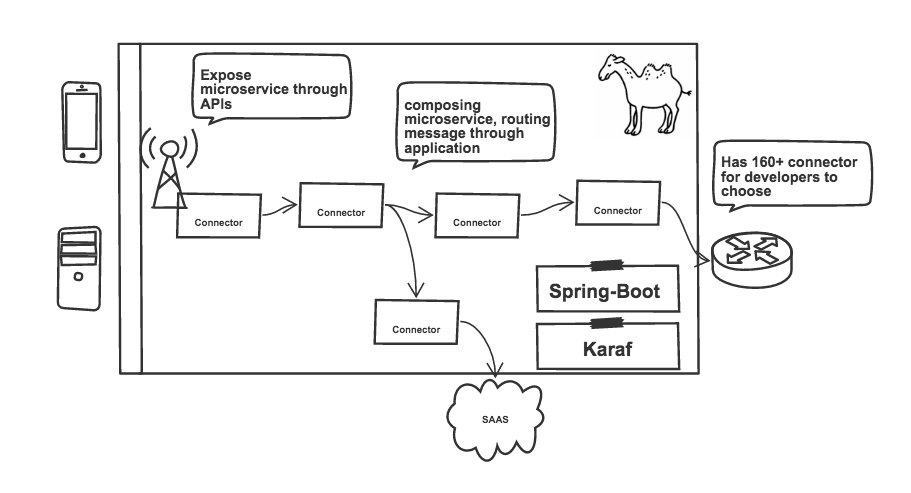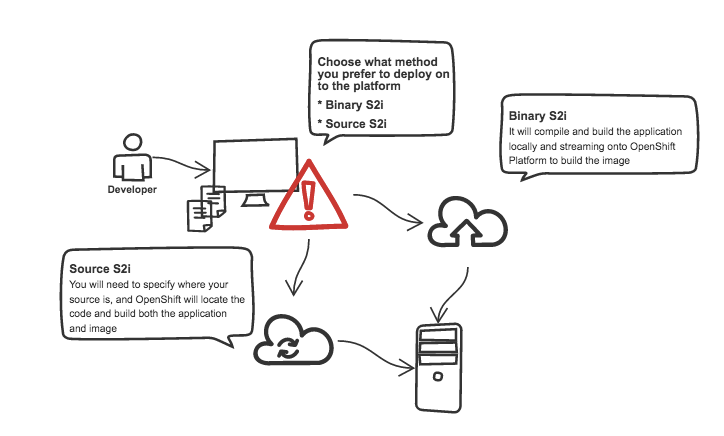To get started with FIS 2.0, for people who are just getting to know the technology, here is how I interpret it. Basically, it's divided into two aspects.
1. Integration development: FIS uses Apache Camel as the core technology that creates, orchestrates, and composes microservices into a super lightweight thin integration layer, and becomes the API provider and service orchestrator through exposing RESTful or messaging service endpoints. And you can choose to either package and run it with Spring-Boot or Karaf.

2. Application Deployment and Management: FIS takes advantages of the OpenShift platform, and allows you to separately deploy the micro-integration service among a distributed environment, at the same time it takes care of the failover, high availability, load balancing and look up available services for you.

So, now we know what is in FIS 2.0, it's time to take a closer look at how it is achieved, as a developer, you first need to decide to go with either Karaf (OSGi) or Spring-Boot framework, I personally prefer the Spring-Boot, because it matches closest to the microservice concept of a lighter deployment package. But it is up to you, the developer, after all, you are the god and creator of your application. After the framework is chosen, the developer will start developing the micro-integration services, composing between microservices or even use it to create a microservice. (With two frameworks, the development experience of the route itself is basically the same, by configuring camel components.)

Once the developer is ready to deploy the integration service, we can then decide how to deploy it onto the OpenShift platform. In FIS 2.0 there are two options, Binary S2i will build the entire application locally, and push it onto OpenShift, so OpenShift platform will use it to create and build the container image that it will run on, and for Source S2i, everything is build on top of OpenShift, so developer need to set the location of the source code in order for OpenShift to retrieve it to build the application and the container image.

And that is all. It is actually much more powerful, it's hard to describe it in one go, dive into it, and you will soon find how fascinating the technology is, and how it can help you to resolve your current problems.
Here is a quick video that shows you how to get your first FIS 2.0 running.
The steps are as follows,
- Install and start up OpenShift on your local machine
- Install FIS image stream definition into OpenShift (raw.githubusercontent.com/jboss-fuse/application-templates/application-templates-2.0.redhat-000026/fis-image-streams.json)
- In JBoss developer studio, create a Camel Spring-boot using the new archetype in FIS 2.0
- (Archetype catalog url: https://maven.repository.redhat.com/earlyaccess/all/io/fabric8/archetypes/archetypes-catalog/2.2.180.redhat-000004/archetypes-catalog-2.2.180.redhat-000004-archetype-catalog.xml)
- Deploy to OpenShift using the Binary S2i tool (maven plugin)
Last updated: August 30, 2023
